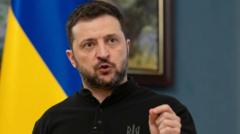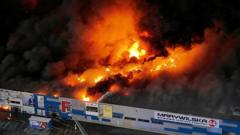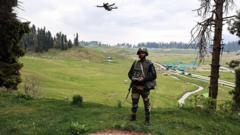Recent patrols by NATO have been marked by increased vigilance against Russian actions in the strategic Baltic Sea region.
NATO's Atlantique 2: Vigilant Patrols in the Baltic Sea

NATO's Atlantique 2: Vigilant Patrols in the Baltic Sea
A French naval plane takes to the skies to monitor Russian activity amid rising tensions.
The French naval patrol plane, Atlantique 2, recently descended through the clouds over the Baltic Sea, on a mission of close monitoring and observation. Tasked with countering potential Russian sabotage, the aircraft skimmed just above the waves, casting a watchful eye over Russian naval assets that came into view. This operation forms part of NATO’s larger, ongoing effort to ensure stability in a region that has seen escalating tensions due to the ongoing conflict between Russia and Western nations.
Lieutenant Commander Romain, part of the crew, highlighted the essence of the mission: “We are to show that we are here.” As they observed Russian warships below, the landscape grew densely militarized. While the crew was equipped solely with surveillance tools rather than munitions, their presence seemed to inject a sense of deterrence.
The Baltic Sea has increasingly become a focal point in geopolitical discussions, especially after several commercial vessels were suspected of having caused damage to critical undersea infrastructure, including communications cables and a gas pipeline. European officials point fingers at potential sabotage orchestrated by Moscow, although concrete evidence remains elusive.
The patrol mission came with challenges; Russian forces made attempts to jam the plane’s GPS, and at one point, a Russian warship targeted the Atlantique with radar, signaling a clear warning of hostile capabilities. The intricate dance of surveillance and counter-surveillance illustrated a tense reality under which NATO planes operate—an ongoing struggle to maintain a delicate balance in the waters where East meets West. As the situation unfolds and military readiness evolves, NATO’s commitment to monitoring and responding to Russian maneuvers continues with resolute determination.
Lieutenant Commander Romain, part of the crew, highlighted the essence of the mission: “We are to show that we are here.” As they observed Russian warships below, the landscape grew densely militarized. While the crew was equipped solely with surveillance tools rather than munitions, their presence seemed to inject a sense of deterrence.
The Baltic Sea has increasingly become a focal point in geopolitical discussions, especially after several commercial vessels were suspected of having caused damage to critical undersea infrastructure, including communications cables and a gas pipeline. European officials point fingers at potential sabotage orchestrated by Moscow, although concrete evidence remains elusive.
The patrol mission came with challenges; Russian forces made attempts to jam the plane’s GPS, and at one point, a Russian warship targeted the Atlantique with radar, signaling a clear warning of hostile capabilities. The intricate dance of surveillance and counter-surveillance illustrated a tense reality under which NATO planes operate—an ongoing struggle to maintain a delicate balance in the waters where East meets West. As the situation unfolds and military readiness evolves, NATO’s commitment to monitoring and responding to Russian maneuvers continues with resolute determination.




















